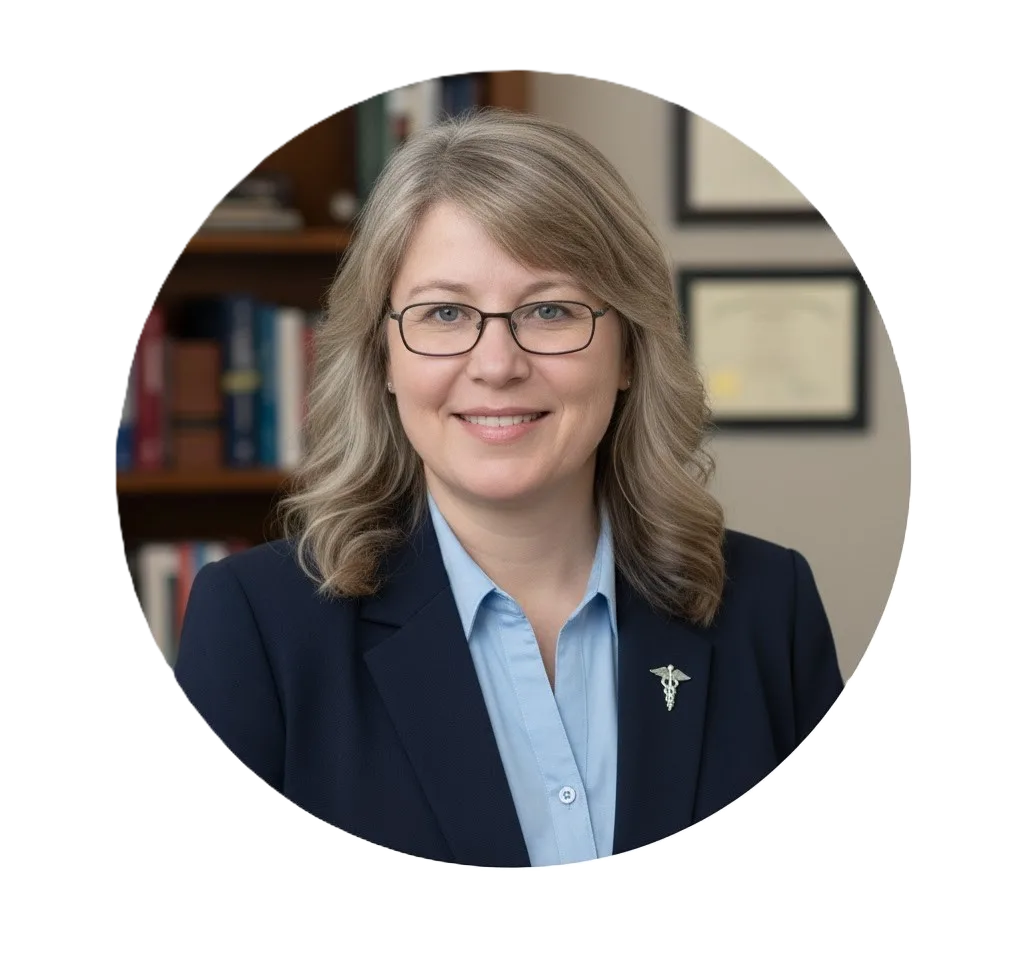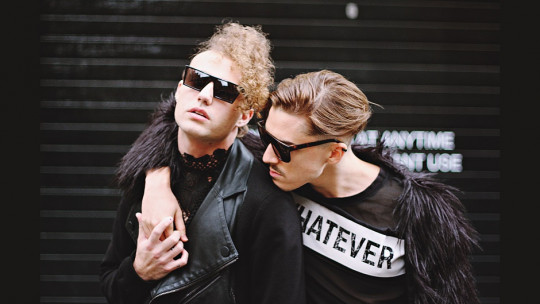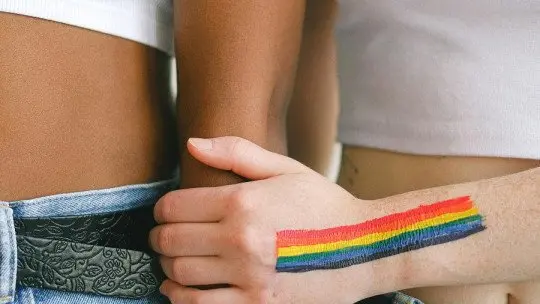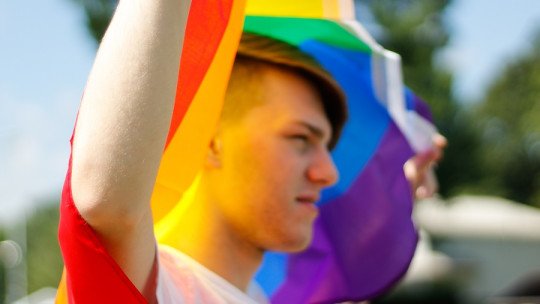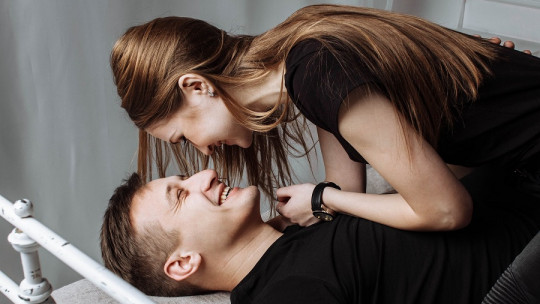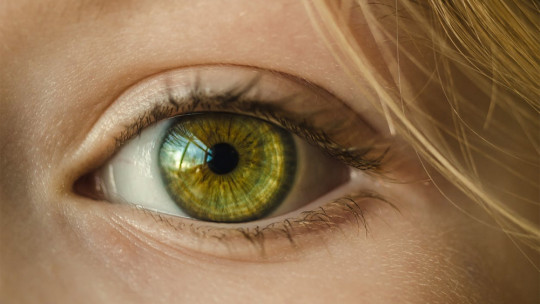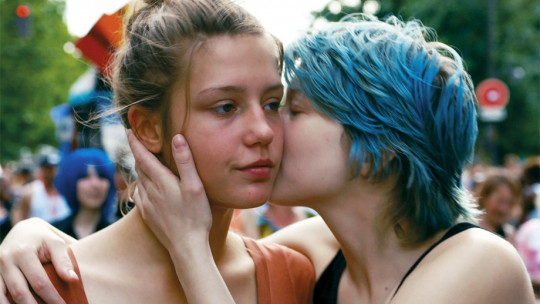The search for categories, labels, and types is deeply human. We want to understand ourselves and others by fitting experiences into neat boxes with clear definitions. So when someone asks about “types of homosexuality,” they’re looking for framework to understand the diversity of human sexual and romantic attraction. But here’s the truth that might surprise you: homosexuality isn’t divided into distinct types the way we might categorize dog breeds or personality disorders. Sexual orientation exists on a complex, multidimensional spectrum that resists simple categorization.
This doesn’t mean variation doesn’t exist. People who experience same-sex attraction display enormous diversity in how that attraction manifests, how they identify, how they express it behaviorally, and what it means in their lives. Two people who both identify as gay might have completely different experiences of their sexuality, different relationship patterns, different levels of attraction to other genders, and different journeys to understanding their orientation. This complexity is what we’re actually exploring when we talk about “types” of homosexuality.
The most influential framework for understanding this diversity remains the Kinsey Scale, developed by Alfred Kinsey in 1948. Rather than treating heterosexuality and homosexuality as binary opposites with a sharp line between them, Kinsey proposed a seven-point continuum from exclusively heterosexual (0) to exclusively homosexual (6), with various degrees of bisexuality in between. This was revolutionary for acknowledging that sexual orientation isn’t either/or but rather exists along a spectrum.
What we’ll explore in this article isn’t “10 types” in the sense of discrete, mutually exclusive categories. Instead, we’ll examine different ways people experience same-sex attraction, different patterns of sexual and romantic orientation, different relationship styles, and different identity labels people use to describe their experiences. We’ll look at how attraction, behavior, and identity don’t always align neatly, and how the same person’s orientation might manifest differently across their lifespan.
This matters because oversimplifying sexual orientation into rigid categories creates problems. It makes people who don’t fit neatly into boxes feel confused or broken. It suggests sexual orientation is simpler than it actually is. It fails to capture how attraction, fantasy, behavior, and identity can all point in different directions for the same person. Understanding orientation as complex and multidimensional, rather than as a set of fixed types, allows for more accurate self-understanding and more compassion for the diversity of human experience.
The Kinsey Scale: A Spectrum Approach
Before exploring different manifestations of same-sex attraction, we need to understand the foundational framework that replaced binary thinking about sexual orientation. Alfred Kinsey, conducting groundbreaking sex research in the 1940s, discovered that many people didn’t fit neatly into “heterosexual” or “homosexual” categories. His interviews revealed enormous variation in people’s sexual histories and attractions.
The Kinsey Scale rates individuals from 0 (exclusively heterosexual) to 6 (exclusively homosexual), with points in between representing varying degrees of bisexuality. A rating of 1 indicates predominantly heterosexual with incidental homosexual attraction or experience. A 2 is predominantly heterosexual but with more substantial same-sex attraction. A 3 represents equal attraction to both sexes. A 4 is predominantly homosexual with significant heterosexual attraction. A 5 is predominantly homosexual with minimal heterosexual attraction.
Kinsey also included an X rating for people with no socio-sexual contacts or reactions—what we’d now call asexual. This addition recognized that some people simply don’t experience sexual attraction to anyone, regardless of gender.
The scale’s brilliance lies in acknowledging fluidity and complexity. Someone might be a 5 (predominantly gay with some heterosexual attraction) throughout most of their life but occasionally have experiences that would place them at 4 or even 6. Sexual orientation isn’t necessarily fixed—it can shift over time, with some people experiencing changes in the balance of their attractions across their lifespan.
However, the Kinsey Scale has limitations. It treats sexual orientation as unidimensional, varying only in the ratio of same-sex to opposite-sex attraction. It doesn’t capture romantic versus sexual attraction (you might be sexually attracted to one gender but romantically attracted to another), doesn’t account for attraction to non-binary individuals, and doesn’t distinguish between attraction, behavior, and identity—three dimensions that don’t always align.
Exclusively Homosexual: The Gold Star Experience
At one end of the spectrum are people who experience attraction exclusively to the same sex—Kinsey 6. These individuals have never felt sexual or romantic attraction to the opposite sex, even in fantasy or fleeting moments. In gay community slang, particularly among gay men, this is sometimes called being “gold star gay”—never having had opposite-sex sexual experiences.
For these individuals, their orientation often feels unambiguous and unchanging from early awareness. Many report knowing they were different from a young age, experiencing crushes on same-sex peers while their friends developed opposite-sex attractions. The journey often involves recognizing this difference, understanding what it means, coming to terms with it internally, and then navigating coming out in family, social, and professional contexts.
Exclusively homosexual individuals sometimes face skepticism from both straight and bisexual people who assume everyone has at least some capacity for opposite-sex attraction. They might be told their orientation is “just a phase,” that they “haven’t met the right man/woman yet,” or that their exclusive same-sex orientation is closed-minded. This erasure of their lived experience can be frustrating and invalidating.
The “gold star” concept itself is controversial within LGBTQ+ communities. Some see it as creating hierarchy—suggesting that exclusively homosexual people who’ve never had opposite-sex experiences are more authentically gay than those who have. This can be hurtful to people who had opposite-sex relationships before recognizing their homosexual orientation, to those who engaged in opposite-sex activity due to compulsory heterosexuality, or to bisexual people who experience same-sex attraction alongside opposite-sex attraction.
Predominantly Homosexual: The Spectrum’s Complexity
Many people identifying as gay or lesbian aren’t exclusively same-sex attracted but predominantly so—Kinsey 4 or 5. They might acknowledge occasional fleeting attraction to opposite-sex individuals, might have had opposite-sex experiences in their past, or might recognize theoretical capacity for opposite-sex attraction even if they don’t actively pursue it.
A Kinsey 5 person is predominantly homosexual with only incidental heterosexual attraction. They might have had a few opposite-sex relationships early in life before recognizing their primary orientation, might occasionally find opposite-sex celebrities attractive, or might acknowledge that under very specific circumstances they could imagine opposite-sex attraction. But their life, relationships, and primary attractions are overwhelmingly same-sex directed.
A Kinsey 4 person has more substantial heterosexual attraction alongside their predominant homosexual orientation. They might genuinely be attracted to both sexes but strongly prefer same-sex partners for relationships. They might identify as gay/lesbian rather than bisexual because their preferences are strong enough that bisexual doesn’t feel accurate, even though they technically experience attraction to multiple genders.
These individuals often face unique challenges around identity labels. Do they identify as gay/lesbian even though they’re not exclusively same-sex attracted? Do they identify as bisexual even though their attraction isn’t evenly balanced? Some use qualifiers like “mostly gay” or “gay with exceptions.” Others simply choose the label that feels right regardless of technically where they fall on the spectrum, recognizing that identity labels are about community and self-understanding, not precise mathematical ratios of attraction.
Behavioral Versus Identity: When Actions Don’t Match Labels
One of the most important distinctions in understanding sexual orientation is separating behavior from identity. What you do sexually doesn’t automatically determine how you identify. Many people engage in same-sex sexual behavior without identifying as gay, lesbian, or bisexual. Others identify as gay or lesbian despite limited same-sex sexual experience.
Men who have sex with men but don’t identify as gay or bisexual (sometimes abbreviated MSM in public health literature) represent a significant population. They might be married to women, might identify as straight, might engage in same-sex activity opportunistically or situationally, or might compartmentalize their same-sex behavior as separate from their core identity. This can occur due to stigma, religious beliefs, cultural factors, or simply because their identity is organized around factors other than sexual behavior.
Similarly, “lesbian until graduation” (LUG) is a sometimes-derogatory term for women who have same-sex relationships during college but identify as straight and pursue opposite-sex relationships afterward. Whether these women were always straight women experimenting, bisexual women who later partnered with men, or lesbians who returned to compulsory heterosexuality is debated. The point is that behavior during one life period doesn’t necessarily determine identity.
Conversely, some people identify as gay or lesbian despite having limited same-sex sexual experience. A closeted gay teenager who’s never dated anyone but knows he’s attracted to men is still gay—identity doesn’t require behavioral confirmation. An elderly lesbian who came out late in life after decades in an opposite-sex marriage is still lesbian, regardless of her behavioral history.
This separation between behavior and identity recognizes that sexual orientation is primarily about attraction patterns and sense of self, not just what you’ve done sexually. It also acknowledges that external factors—opportunity, safety, social pressure, internalized homophobia—can prevent people from acting on their attractions or can push them into sexual experiences that don’t align with their orientation.
Romantic Versus Sexual Orientation: The Split-Attraction Model
Another layer of complexity emerges from recognizing that romantic attraction and sexual attraction, while often aligned, can point in different directions. The split-attraction model distinguishes between whom you want to have sex with and whom you want romantic relationships with—and these aren’t always the same gender.
Someone might be homosexual but heteroromantic—sexually attracted to the same sex but romantically attracted to the opposite sex. This is less common but does occur. More frequently, people are homoromantic asexual—interested in romantic relationships with the same sex but experiencing little or no sexual attraction to anyone. These individuals might identify as gay or lesbian based on their romantic orientation even though their sexual orientation is asexual.
The split-attraction model gained prominence through asexual communities, who needed language to describe romantic orientations independent of sexual orientations. It’s proven useful for others whose romantic and sexual attractions don’t align neatly. However, it’s also been critiqued as unnecessarily complicating orientation for people whose romantic and sexual attractions do align—the majority of people.
For those who do experience split attractions, finding language and community can be challenging. Do you identify based on your sexual orientation or romantic orientation? Do you seek relationships that satisfy your sexual needs or romantic needs, given that partners who fulfill both might not exist? These questions don’t have universal answers—individuals navigate them based on their priorities and circumstances.
The split-attraction model also highlights how reducing orientation to just sexual attraction oversimplifies what draws people into relationships. For many people, romantic connection, emotional intimacy, and domestic partnership matter as much or more than sexual activity. Recognizing this helps us understand people whose relationship patterns don’t match what we’d predict from their sexual attractions alone.
Compulsory Heterosexuality and Late-Blooming Lesbians
Many gay men and lesbians spend years or even decades engaging in opposite-sex relationships before recognizing their homosexual orientation. This often results from compulsory heterosexuality—the societal assumption that everyone is straight unless proven otherwise, combined with social pressure to pursue opposite-sex relationships regardless of actual attraction patterns.
Women particularly often experience delayed recognition of lesbian identity, sometimes called “late-blooming lesbians” or “late-in-life lesbians.” They might marry men, have children, and spend decades in heterosexual relationships before recognizing their primary orientation is toward women. This doesn’t mean they were bisexual and became lesbian, or that their earlier relationships were fake—it means they didn’t have frameworks to recognize their same-sex attraction, or did recognize it but suppressed it due to social pressure, religious beliefs, or practical concerns.
Compulsory heterosexuality teaches people to interpret their feelings through heterosexual frameworks even when those feelings are actually same-sex oriented. A lesbian might interpret deep emotional bonds with female friends as “close friendship” rather than romantic attraction. She might engage in opposite-sex relationships because that’s what everyone does, without recognizing that her lack of genuine attraction or sexual desire isn’t normal for straight women.
Coming out late in life creates unique challenges. These individuals might have established lives—marriages, children, careers, social circles—built on heterosexual assumptions. Coming out requires deconstructing these structures or navigating how to be honest about orientation while maintaining them. There’s often grief over years spent living inauthentically, alongside relief at finally understanding themselves.
Late recognition of homosexual orientation is distinct from sexual fluidity—where orientation actually changes over time. For most late-blooming lesbians and gay men, retrospective analysis reveals they were always gay but didn’t recognize or acknowledge it. The orientation didn’t change; the self-understanding did. However, distinguishing between these scenarios—delayed recognition versus actual fluidity—can be difficult, and individuals’ own interpretations of their experiences should be respected.
Bisexuality Within Homosexual Experience
The boundaries between homosexual and bisexual identities are blurry and often contested. As discussed earlier, many people who identify as gay or lesbian aren’t exclusively same-sex attracted but fall at Kinsey 4 or 5—predominantly homosexual with varying degrees of opposite-sex attraction. The question of whether these individuals are “really” bisexual or “really” gay depends on how you prioritize different aspects of orientation.
Some argue that anyone with any capacity for both same-sex and opposite-sex attraction is bisexual by definition. From this perspective, truly “homosexual” individuals exist only at Kinsey 6. Everyone else exists somewhere on the bisexual spectrum, even if their attractions are heavily skewed toward one sex.
Others argue that identity labels should reflect primary orientation and lived experience rather than technical capacity for attraction. From this perspective, someone whose attractions are 90% same-sex and who exclusively pursues same-sex relationships can legitimately identify as gay or lesbian, even if they occasionally experience opposite-sex attraction. Identity is about how you understand yourself and what community you belong to, not precise measurement of attraction ratios.
This debate has political dimensions. Some bisexual activists argue that gay and lesbian communities erase bisexuality by claiming people with any same-sex attraction as gay/lesbian. They point out that many prominent “gay” or “lesbian” historical figures were actually bisexual, but their opposite-sex attractions get minimized or ignored. Conversely, some in gay/lesbian communities argue that acknowledging small amounts of opposite-sex attraction as making someone bisexual validates the harmful “everyone’s a little bisexual” rhetoric used to deny gay identity legitimacy.
What’s clear is that rigid boundaries between homosexual and bisexual identities don’t reflect many people’s actual experiences. Sexual orientation exists on a spectrum, and where people draw lines between gay/lesbian and bisexual varies based on personal factors, community norms, and political commitments rather than any objective standard. Respecting people’s self-identification, regardless of where you’d categorize them based on their attractions, is the most respectful approach.
Fluidity: When Orientation Changes Over Time
While most people’s sexual orientation remains relatively stable throughout life, some individuals experience genuine changes in their attraction patterns over time. This fluidity is distinct from delayed recognition of orientation—it involves actual shifts in who you’re attracted to rather than just coming to understand existing attractions better.
Lisa Diamond’s longitudinal research on women’s sexual fluidity showed that some women experience changes in the balance of same-sex and opposite-sex attractions across their lifespan. A woman who identified as lesbian in her twenties might develop unexpected opposite-sex attractions in her forties. A previously straight woman might experience same-sex attraction emerging later in life. These aren’t phase-based changes but genuine evolution in orientation.
Fluidity appears more common in women than men, though whether this reflects real biological differences or social factors allowing women more freedom to acknowledge fluid attraction isn’t clear. Men’s orientations typically stabilize earlier and change less frequently, though exceptions certainly exist. This gender difference has been attributed to women’s sexuality being more context-dependent and less rigidly defined, though these explanations remain somewhat speculative.
Sexual fluidity creates challenges for understanding orientation because it suggests orientation isn’t necessarily a fixed core characteristic but can be somewhat malleable. This makes some LGBTQ+ advocates uncomfortable because “born this way” narratives have been politically useful in fighting discrimination. If orientation can change, doesn’t that validate conversion therapy attempts to change it?
The answer is that fluidity isn’t the same as choice or changeability through external intervention. When orientation changes naturally over time for some people, it does so spontaneously, not through deliberate efforts to alter it. Conversion therapy doesn’t work, causes harm, and is rejected by all major mental health organizations. Natural fluidity in some individuals doesn’t mean orientation is chosen or changeable through intervention for most people, whose orientations remain stable regardless of external pressure to change.
Identity Labels and Community Belonging
Beyond the mechanics of attraction and behavior, sexual orientation connects to identity labels and community belonging. How people identify—gay, lesbian, bisexual, queer, questioning, or no label at all—involves more than just attraction patterns. It’s about finding language that resonates, connecting with communities, and constructing coherent narratives about who you are.
Some people whose attractions would technically place them at Kin sey 4 identify as bisexual because that label honors all their attractions. Others with identical attraction patterns identify as gay or lesbian because their relationships and community connections are exclusively same-sex. Still others use “queer” as an umbrella term that captures non-heterosexual orientation without specifying exact ratios of same-sex to opposite-sex attraction.
Identity labels serve multiple functions: they communicate orientation to others, they connect you to communities with shared experiences, and they shape how you understand your own attractions and experiences. The “right” label is whatever feels authentic and useful to the individual, not whatever technically matches their attraction patterns according to external observers.
Younger generations increasingly reject traditional labels as limiting, preferring terms like “queer” or rejecting labels entirely. They point out that labels like gay/lesbian/bisexual were developed in specific cultural and historical contexts, assume binary gender, and might not capture contemporary understandings of sexuality and gender. Others value traditional labels precisely because they connect to historical communities and political movements—being a “lesbian” links you to lesbian-feminist history in ways that “queer” doesn’t.
The debate over labels reflects broader tensions between naming experiences precisely and resisting categorization, between honoring tradition and adapting to new understandings, between community solidarity and individual authenticity. There’s no resolution because different people have different needs around language and community. Respecting how people identify themselves, even when you’d categorize them differently, remains the best practice.
FAQs About Homosexuality and Sexual Orientation
Is sexual orientation fixed or can it change?
For most people, sexual orientation is relatively stable throughout life. The attractions you experience in adolescence typically remain consistent into adulthood and beyond. However, some individuals do experience genuine fluidity—changes in the balance of same-sex and opposite-sex attractions over time. This fluidity appears more common in women than men. Importantly, fluidity that occurs naturally is different from attempts to change orientation through conversion therapy, which doesn’t work, causes harm, and is condemned by all major mental health organizations. Some people also experience delayed recognition of their orientation rather than actual change—they were always gay but didn’t realize it until later. Distinguishing between actual fluidity and delayed recognition can be difficult and ultimately depends on individuals’ own interpretation of their experiences.
What’s the difference between sexual orientation, behavior, and identity?
Sexual orientation refers to patterns of attraction—who you’re drawn to sexually and romantically. Behavior refers to actual sexual activities—who you have sex with. Identity refers to how you label yourself—gay, straight, bisexual, etc. These three dimensions don’t always align. Someone might be attracted primarily to the same sex (orientation) but never act on that attraction (behavior) and identify as straight (identity) due to stigma or other factors. Conversely, someone might engage in same-sex sexual behavior without same-sex attraction (situational homosexuality in prisons, for example) and not identify as gay. In ideal circumstances, all three align—attraction, behavior, and identity match. But social pressure, internalized homophobia, lack of opportunity, and other factors can create misalignment between these dimensions.
Why do some people come out as gay later in life?
Late recognition and disclosure of homosexual orientation happens for multiple reasons. Compulsory heterosexuality—societal assumption that everyone is straight—teaches people to interpret their feelings through heterosexual frameworks even when their attractions are actually same-sex directed. They might not have language or frameworks to recognize their orientation, especially in older generations who grew up when homosexuality was more stigmatized and less visible. Religious beliefs, family pressure, or fear of discrimination might cause people to suppress recognition of same-sex attraction. Women particularly often experience delayed recognition, sometimes spending decades in opposite-sex marriages before acknowledging lesbian orientation. This isn’t typically because orientation changed but because they didn’t recognize or acknowledge it earlier. Late coming out creates unique challenges around deconstructing lives built on heterosexual assumptions, but many people report profound relief at finally living authentically.
Can someone be romantically attracted to one gender but sexually attracted to another?
Yes, this is called the split-attraction model. While romantic and sexual attractions align for most people, they can point in different directions for some individuals. Someone might be homoromantic asexual—interested in romantic relationships with the same sex but experiencing little or no sexual attraction to anyone. Less commonly, people might be homosexual but heteroromantic, or vice versa. The split-attraction model gained prominence through asexual communities who needed language to describe romantic orientations independent of sexual orientations. It’s useful for people whose romantic and sexual attractions don’t align but has been critiqued as unnecessarily complicating orientation for the majority of people whose romantic and sexual attractions do match. For those who do experience split attractions, navigating relationships requires deciding whether to prioritize sexual needs, romantic needs, or find partners who somehow satisfy both despite the misalignment.
What does the Kinsey Scale measure?
The Kinsey Scale, developed in 1948, rates sexual orientation on a continuum from 0 (exclusively heterosexual) to 6 (exclusively homosexual), with intermediate points representing varying degrees of bisexuality. A rating of 3 indicates equal same-sex and opposite-sex attraction. The scale also includes X for individuals with no socio-sexual contacts or reactions (asexual). It was revolutionary for treating sexual orientation as a spectrum rather than binary either/or categories. However, it has limitations: it treats orientation as unidimensional, doesn’t distinguish between attraction, behavior, and identity, doesn’t capture romantic versus sexual attraction separately, and was developed assuming binary gender, not accounting for attraction to non-binary individuals. Despite limitations, the Kinsey Scale remains influential for acknowledging that sexuality exists on a spectrum and that many people don’t fit neatly into “heterosexual” or “homosexual” categories.
Is being gay a choice?
No, sexual orientation is not a choice. People don’t choose whom they’re attracted to any more than they choose their height or eye color. Sexual orientation appears to result from complex interactions between genetic, hormonal, and environmental factors during development, though the exact mechanisms aren’t fully understood. What is chosen is whether and how to act on attractions, and how to identify and express orientation publicly. Closeted gay people choose to hide their orientation; out gay people choose to live openly. But the underlying attractions themselves aren’t chosen. This is why conversion therapy—attempts to change sexual orientation—doesn’t work and causes significant psychological harm. All major mental health organizations condemn conversion therapy and affirm that homosexuality is a normal variation of human sexuality, not a disorder requiring treatment. The question of choice versus immutability has political implications, with “born this way” narratives historically useful in fighting discrimination, though ideally rights shouldn’t depend on whether characteristics are chosen.
What does it mean to identify as queer versus gay/lesbian?
Both terms describe non-heterosexual orientations but have different connotations and usage patterns. Gay and lesbian are more specific identity labels indicating same-sex attraction, with lesbian specifically denoting women attracted to women and gay indicating men attracted to men (though sometimes used more broadly). Queer is a broader umbrella term encompassing anyone whose sexuality doesn’t fit heterosexual/cisgender norms—including gay, lesbian, bisexual, pansexual, asexual, and various other identities. Queer was historically a slur but has been reclaimed, though some older LGBTQ+ people remain uncomfortable with it due to its history. Younger generations often prefer queer because it resists precise categorization and doesn’t assume binary gender. Some people use it because their attractions don’t fit neatly into gay/lesbian/bisexual categories. Others use it as political identity signaling non-normative sexuality and gender. The choice between queer and specific labels like gay/lesbian reflects personal preference, generational differences, and whether you prioritize connection to specific communities versus resistance to categorization.
Why do some people say “gold star gay” and is it offensive?
“Gold star gay” refers to gay men or lesbians who have never had sexual experiences with the opposite sex. The term comes from giving children gold stars for perfect performance. Some use it neutrally to describe their experience; others use it proudly as marker of authenticity. However, many find the term problematic because it creates hierarchy within LGBTQ+ communities, suggesting people who’ve never had opposite-sex experiences are more “authentically” gay than those who have. This can be hurtful to people who had opposite-sex relationships before recognizing their orientation, those who engaged in opposite-sex activity due to compulsory heterosexuality or survival needs, and bisexual people who experience same-sex attraction alongside opposite-sex attraction. The term also ignores that sexual history doesn’t determine orientation—someone who’s never had same-sex experiences can still be gay, and someone with opposite-sex history can be equally gay. Most LGBTQ+ advocates discourage using “gold star” language because it divides communities and invalidates people’s identities based on behavioral history rather than actual orientation.
How common is exclusively homosexual orientation?
Estimates vary depending on definitions and methodology, but exclusively homosexual orientation (Kinsey 6) appears less common than the broader category of non-heterosexual orientations. Kinsey’s original research suggested about 4% of men and 1-3% of women were exclusively homosexual throughout their lives. More recent surveys typically find 3-5% of adults identifying as lesbian or gay, with additional percentages identifying as bisexual. However, these numbers capture identity, not necessarily attraction patterns—some people experiencing same-sex attraction don’t identify as gay/lesbian, while others identifying as gay/lesbian may not be exclusively same-sex attracted. The percentages also vary across cultures, generations, and depend heavily on how questions are asked. Younger generations report higher rates of non-heterosexual orientation, possibly due to reduced stigma allowing more honest reporting. What’s clear is that exclusively homosexual individuals represent a small but significant minority of the population, with much larger percentages experiencing some degree of same-sex attraction even if not exclusively or predominantly.
Can sexual orientation be measured objectively?
Not entirely. Sexual orientation involves subjective internal experiences of attraction that can’t be directly observed or measured. Researchers use self-reports—asking people about their attractions, behaviors, and identities—which depend on honest disclosure and accurate self-knowledge. Some studies measure physiological arousal (pupil dilation, genital response) to various stimuli, but arousal doesn’t perfectly map onto subjective attraction—you can be aroused by something you’re not attracted to, and vice versa. Brain imaging studies show different patterns of neural activation in response to attractive stimuli based on sexual orientation, but individual-level prediction remains imperfect. Hormonal studies have found some correlations but not definitive biomarkers. The complexity arises because sexual orientation has multiple dimensions—fantasy, attraction, behavior, identity, emotional bonds—that don’t always align. Someone might have same-sex fantasies but opposite-sex behavior, or same-sex arousal patterns but heterosexual identity. Any “objective” measure captures only one dimension, missing the full picture that ultimately depends on individuals’ own understanding and articulation of their experiences.
The premise of “10 types of homosexuality” misses what’s actually true about sexual orientation: it exists on complex, multidimensional spectrums rather than fitting into neat categorical boxes. The Kinsey Scale moved us beyond binary thinking toward understanding sexuality as a continuum, but even that framework oversimplifies the reality. Sexual orientation encompasses attraction, behavior, identity, fantasy, emotional bonds, and romantic preferences—dimensions that don’t always align within individuals and can shift across time for some people.
What matters isn’t identifying your precise “type” from a predetermined list but understanding your own unique pattern of attractions, how you make meaning from those attractions, and finding language and community that resonate with your experience. Two people both identifying as gay might have completely different experiences of their sexuality. That’s not a problem requiring better categorization—it’s the reality of human diversity.
The search for types reflects legitimate desire to understand variation within homosexual experience. But perhaps the wrong question is being asked. Instead of “What are the types?” maybe ask “How do different people experience same-sex attraction?” “How does orientation intersect with identity, behavior, and community?” “How does the same person’s orientation manifest across different contexts and life stages?” These questions honor complexity without forcing it into boxes that inevitably distort individual experiences.
Progress in LGBTQ+ rights has been achieved partly by making the case that sexual orientation is innate, unchangeable, and deserving of civil rights protections. This “born this way” narrative has been politically useful but risks oversimplifying. Some people do experience fluidity. Attraction, behavior, and identity don’t always align. People use various labels for similar experiences, or similar labels for different experiences. None of this makes orientation less real or less deserving of respect and rights.
Ultimately, respecting how people understand and describe their own orientations matters more than achieving scientific precision in categorization. If someone says they’re gay, they’re gay—regardless of whether they’re Kinsey 6 or Kinsey 5, whether they’ve had opposite-sex experiences, whether they came out at 15 or 50. If someone says they’re bisexual, believe them—even if their attractions are heavily skewed toward one sex. Identity labels are about self-understanding and community belonging, not about meeting external criteria. The diversity of human sexual orientation can’t be captured in 10 types, or 20, or 100. It’s as varied as humans themselves, and that variety deserves celebration rather than taxonomic reduction.

